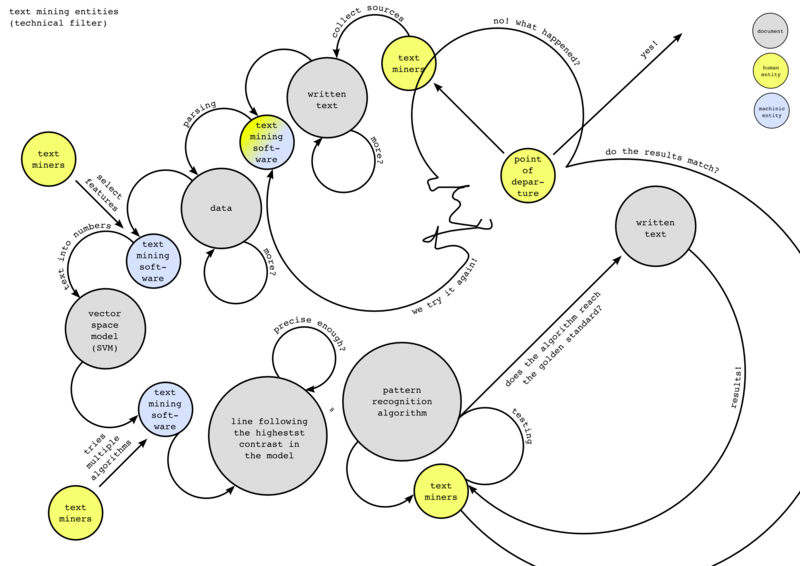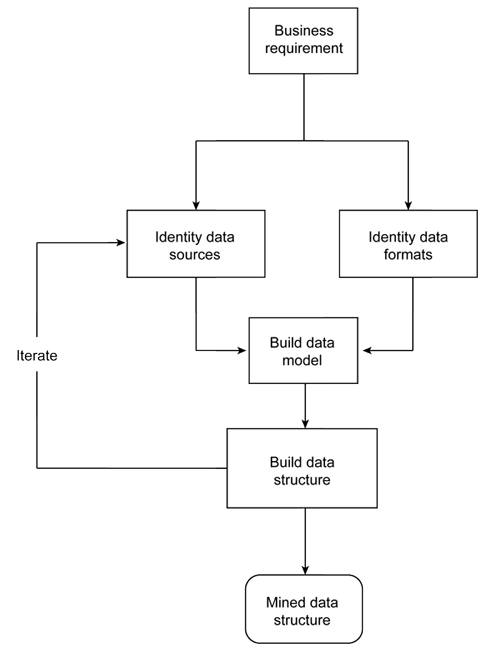User:Manetta/i-could-have-written-that/knowledge-discovery-workflow: Difference between revisions
(Created page with "<div style="width:100%;max-width:800px;"> __TOC__ =''knowledge discovery'' workflow= 800px|border <small>workflow based on [http://...") |
No edit summary |
||
| Line 8: | Line 8: | ||
[[File:IBM-Data-mining circulation-workflow.gif|border]]<br> | [[File:IBM-Data-mining circulation-workflow.gif|border]]<br> | ||
<small>workflow from [http://www.ibm.com/developerworks/library/ba-data-mining-techniques/ IBM | <small>workflow from [http://www.ibm.com/developerworks/library/ba-data-mining-techniques/ IBM developerWorks page on Data mining techniques]</small> | ||
''The process of data analysis, discovery, and model-building is often '''iterative''' as you target and identify the different information that you can extract. You must also understand how to relate, map, associate, and cluster it with other data to produce the result. Identifying the source data and formats, and then mapping that information to our given result '''can change after you discover different elements and aspects of the data'''.'' [http://www.ibm.com/developerworks/library/ba-data-mining-techniques/ (IBM developerWorks page on Data mining techniques)] | |||
==notes== | ==notes== | ||
Revision as of 18:07, 14 January 2016
knowledge discovery workflow
 workflow based on Pattern, a text-mining software package developed at the University of Antwerp
workflow based on Pattern, a text-mining software package developed at the University of Antwerp

workflow from IBM developerWorks page on Data mining techniques
The process of data analysis, discovery, and model-building is often iterative as you target and identify the different information that you can extract. You must also understand how to relate, map, associate, and cluster it with other data to produce the result. Identifying the source data and formats, and then mapping that information to our given result can change after you discover different elements and aspects of the data. (IBM developerWorks page on Data mining techniques)
notes
no ne
